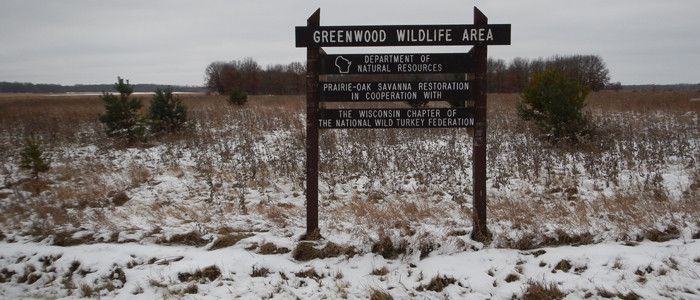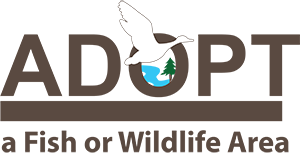Greenwood Wildlife Area

Located in west-central Waushara County, one mile southeast of Hancock, the Greenwood State Wildlife Area lies on the edge of a pitted outwash plain. This creates a flat sandy topography and a wooded hilly moraine.
Historically, the plains area was in agricultural practices and an important wintering area for a local population of giant Canada geese. In 1938, it was closed to goose hunting for the next ten years by designation as a state refuge. As the giant Canada goose population increased statewide, it became apparent the refuge was no longer needed. In 1994, an effort to restore the area to native prairie and barrens habitat types began. Approximately 650 acres have been restored to prairie, and about 700 acres are dominated by oak forest community types.
Recognition of the diversity of glacial formations within the wildlife area led to the designation of an alternate route of the Wisconsin Ice Age Trail route. The trail traverses along the southern and eastern borders, with a new segment through the grasslands. Additionally, a snowmobile trail exists through a portion of the south of the property. There is ample parking on all sides of the wildlife area.
History
Before state ownership, the state leased some of the lands in present ownership, and about 10 acres were purchased annually for goose feed. From 1949-53, several hundred acres of state land were cropped by the UW Experimental Station at Hancock. The Department of Natural Resources took over the entire farming operation in 1954 and initiated a Soil Conservation Service farm plan to control wind erosion and increase soil fertility. Farm operations have been conducted by area farmers since 1960 under sharecropping agreements directed by the property manager. As the giant Canada goose population increased statewide, it became apparent the refuge was no longer needed. In 1994, with financial support from the Wisconsin chapter of the National Wild Turkey Federation and Turkey Stamp funding, an effort to restore the area to native prairie and savanna began. Approximately 100 acres remain in crops, while the remaining 500 or so acres have been restored to prairie. This provides an important habitat for grassland-dependent species. The refuge status has been eliminated, and hunting is open during the appropriate seasons.
Management objective
Management is focused on providing diverse habitats for numerous species that rely on the full spectrum of upland fire-dependent habitats (grassland, shrubland, savanna and dry forest). Maintaining and enhancing these habitat types by using prescribed fire or other means is a priority. The property supports populations of the federally endangered Karner Blue Butterfly and is noted in the Federal Recovery Plan for this species as a recovery property. Many species of grassland birds use the property during breeding season.
Timber harvesting occurs regularly on the property and is the most applied forest management technique. Oak forest and woodland management prescriptions are used to achieve age and size class diversity among stands and to ensure adequate regeneration of young forests.
Visit the property planning page for more information on master planning for this and other wildlife areas around the state, visit the property planning page.
Recreation
The Greenwood Wildlife Area offers many recreational opportunities:
- Auto travel
- Birding
- Cross-country skiing (no designated trail)
- Hiking (designated and non-designated trails)
- *Hunting (noted for deer, turkey and small game)
- Snowmobiling (designated trails only)
- Trapping
- Wild edibles/gathering
- Wildlife viewing
*Notes: An adjacent Ice Age Trail parcel is to the south. No special hunting regulations are in place; the trail corridor is open to hunting.
Amenities
- Bathroom - none.
- Parking lot - there are four parking areas throughout the property.
- Campground and size - none.
- Trails, Types and Lengths - State Ice Age Trail.
Maps
Download [PDF] a map of this property.
If you want to explore this property further, you can access an interactive map.
Find out more about how to adopt this wildlife area.

